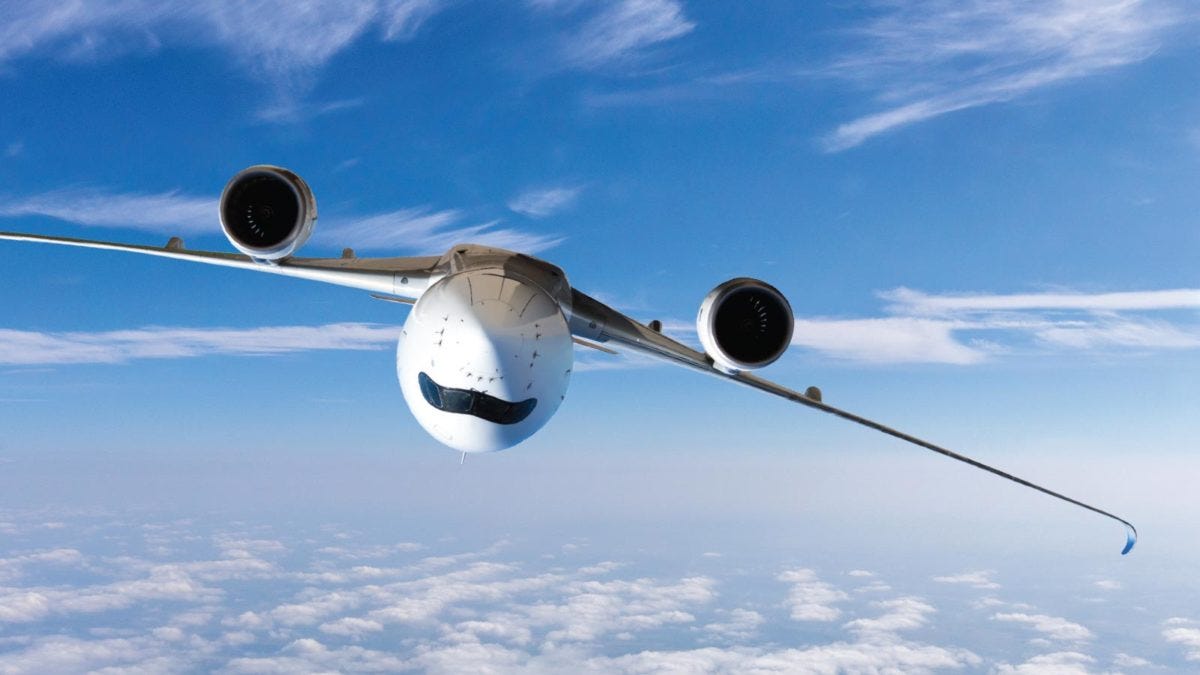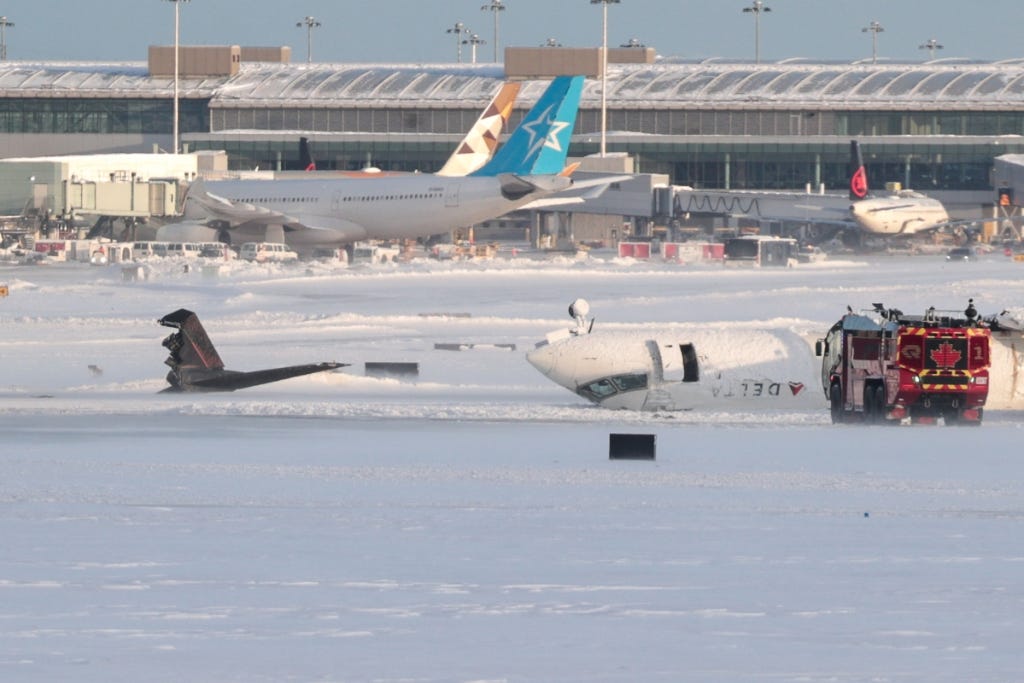This Is Your Captain Speaking... Brace For Impact
007: The Current State of the Airline Industry & Aviation Market
Introduction
Industry: Airline & Aeronautical
Companies: Southwest Airlines, Delta Airlines, American Airlines, United Airlines, Alaska Air, JetBlue Airways, Boeing, Bombardier
There is a downloadable PDF of this writeup found HERE
Be sure to check out our podcast HERE
The thrill of travel is often offset by the fear of missed connections, rising ticket prices, and the occasional catastrophic news story about a crash. But for many, it’s still the fastest way to get from point A to point B. Today, airlines deal with everything from skyrocketing fuel costs to labor shortages, all while attempting to juggle the ever-growing consumer expectations for comfort, convenience, and affordable prices. As we enter a turbulent 2025, the looming question on every passenger’s mind is now, more than ever: Is it safe to fly?
Abstract
The airline industry has undergone significant changes in recent years, shaped by a combination of evolving consumer demands, technological advancements, and global challenges. From the recovery post-pandemic to the rising costs of fuel and labor shortages, airlines are navigating a complex landscape to maintain profitability and customer satisfaction. Recent high-profile crashes and safety concerns have added a layer of uncertainty, with growing fears among passengers about the risks of air travel. As we enter into the Summer season, when travel demand surges, airlines face increasing pressure to balance operational efficiency and sustainability goals. And now they must accomplish this all while addressing safety concerns and dealing with the unpredictable nature of international regulations and geopolitical tensions. This article explores the current state of the airline industry, examining key events and challenges.
FAA = Fear And Anxiety
The Federal Aviation Administration is the U.S. government agency responsible for regulating and overseeing all aspects of civil aviation, including flight safety, air traffic control, and aircraft certification. To understand where things have gone wrong in 2025, we have to take a step back and examine the months heading into 2025.
Shortly before President Donald Trump’s 2025 inauguration, The FAA Administrator, Michael Whitaker, announced his resignation. His departure came unexpectedly just over a year into his five-year term; Whitaker took office in October 2023 after the FAA had gone without a permanent leader for 18 months. Given how unstable the airline market has been since coming out the pandemic, this was less than ideal for the agency (remember the lady who got sucked out of a Southwest Airline window?).
President Trump acted quickly and nominated Chris Rocheleau for the role. Chris is a former Air Force Lieutenant Colonel who has 20+ years’ experience working at the FAA. Chris is now also tasked with the ongoing oversight of Boeing, which faces production restrictions after the mid-flight door blowout incident, as well as address a shortage of air traffic controllers amid record-high air travel demand.
To add to Chris’ inbox, the FAA also conducted the layoff of hundreds of employees just weeks into 2025. The National Air Traffic Controllers Association (NATCA) noted that it is particularly concerned about the dismissal of engineers, aircraft certification specialists, and other aviation safety professionals. Important to note, it has been reported that no air-traffic controllers have been reported among those fired. The Transportation Department stated that the FAA retained employees in safety-critical roles and continues hiring controllers and mechanics. However, the firings come at a time of heightened concern over air safety, following multiple high-profile crashes this year, including a deadly midair collision between a U.S. Army helicopter and an American Airlines regional jet which will be covered later in the article.
Adding to the controversy, the Transportation Department has enlisted Elon Musk’s Department of Government Efficiency to modernize air traffic control, with a SpaceX team visiting a key FAA facility. Musk’s involvement has raised concerns about conflicts of interest, given the FAA's regulatory role over his SpaceX. Union leaders have strongly criticized the firings, arguing they will put further strain on an already understaffed workforce and potentially compromise public safety.
Fasten Your Seatbelts
Yesterday afternoon, a Delta Air Lines regional jet flipped upside down after landing in harsh winter conditions at Toronto-Pearson International Airport, injuring 18 people. The aircraft, a Bombardier CRJ900, lost its tail and wings as it skidded along the runway before coming to rest on its roof. The flight, which originated from Minneapolis, was carrying 76 passengers and four crew members. The crash adds to the troubling trend in US aviation safety this year, following multiple fatal incidents.
Toronto’s airport temporarily closed after the crash, leading to flight delays and cancellations. The U.S. National Transportation Safety Board (NTSB) is assisting Canadian investigators in determining the cause of the accident. This adds to the growing “to-do” list at NTSB which is still investigating whether missed air traffic control instructions and/or faulty altitude readings contributed to the deadly midair collision between a U.S. Army Black Hawk helicopter and an American Airlines regional jet near Washington, D.C., on January 29. The crash, which resulted in the deaths of all 67 people aboard both aircraft, is the worst U.S. civil aviation disaster in decades.
NTSB Chair Jennifer Homendy revealed that the Black Hawk’s cockpit voice recorder did not capture a key directive from air traffic controllers instructing the helicopter to "pass behind" the American CRJ-700 before impact. Investigators determined that the instruction was "stepped on," meaning it was unintentionally overridden by simultaneous radio communication from the helicopter’s crew, preventing them from hearing the warning.
Another focus of the probe is whether the helicopter’s instruments displayed incorrect altitude readings. While data from the aircraft’s radio altimeter confirmed that it was flying at 278 feet above the Potomac River, investigators are assessing whether the Black Hawk’s barometric altimeters, which are used by pilots for navigation, were providing inaccurate information.
Thank You For Flying With Us
Southwest Airlines announced this week that they are terminating 1,750 corporate employees, about 15% of its leadership positions, starting in April. This marks the first time in the airline’s history that it has resorted to involuntary job cuts which is a significant departure from its longstanding commitment to job security.
Financial pressures have played a key role in this decision. Despite reporting improved financial performance in Q4 of 2024, Southwest warned in January that costs were rising faster than expected. Inflation and labor contracts have put strain on the company’s bottom line, making it difficult to sustain its previous level of spending. To offset these challenges, Southwest expects to save $210 million in 2025 and $300 million in 2026 through these layoffs, though it will take a one-time charge of up to $80 million this quarter.
The influence of activist investor Elliott Investment Management has also contributed to the airline’s shift in direction. The hedge fund has been pushing for changes at Southwest, resulting in a board shakeup and renewed efforts to streamline operations. Although CEO Bob Jordan insists that the airline had already been considering adjustments before Elliott’s involvement, the investor’s pressure likely accelerated the timeline for cost-cutting measures, including layoffs.
Another factor in the layoffs is Southwest’s rapid expansion during the pandemic. The airline added 18 new cities to its network, expecting to grow as it had in previous economic recoveries. However, rising costs, delays in aircraft deliveries from Boeing, and other operational delays forced Southwest to scale back its expansion plans. Instead of aggressive growth, the airline now aims for only 1% to 2% capacity expansion per year through 2027.
Beyond financial and operational concerns, these layoffs could have a significant impact on Southwest’s well-regarded corporate culture. The airline has long prided itself on its employee-friendly policies, avoiding involuntary job cuts even during major industry downturns like the post-9/11 period and the COVID-19 pandemic. Critics argue that Southwest’s culture has diminished as the airline has grown, and this latest round of layoffs may further erode the trust and loyalty that have long defined its workforce.
Conclusion
Increasing safety concerns, high-profile crashes and leadership changes at the FAA have left Airlines in a tough position to start 2025. The recent layoffs of aviation professionals, alongside Elon Musk's controversial involvement in modernizing air traffic control, add layers of uncertainty to an already fragile sector. While airlines like Southwest seek to balance financial pressures with growth, these cutbacks and safety issues prompt a deeper question:
In the race for profitability, will airlines compromise on the foundational elements of safety, security, and employee culture, that have historically made air travel a reliable mode of transport? Or can it find a way to evolve without sacrificing trust?












